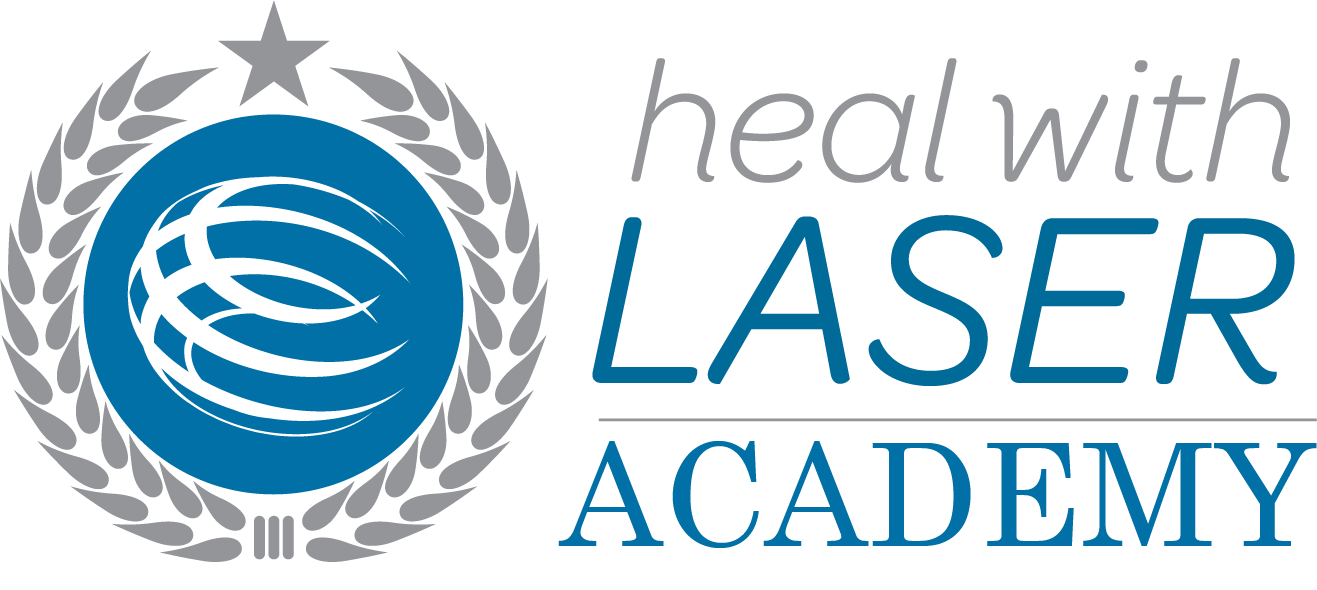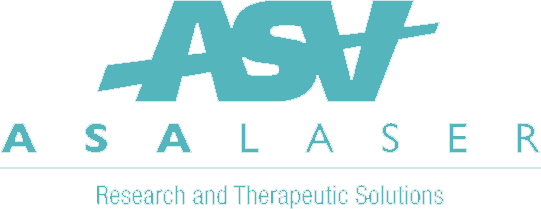Incorporating Lasers Into Your Dental Practice – transcript
Hi, my name is Dr. Karina Patel, and I’m from the TMJ and Sleep Therapy Center of London. I’m going to talk to you about how to incorporate the MLS Laser into your practice. So, why do you even need to consider a laser? Unfortunately, because everything that you do as a dentist causes pain and inflammation.
There are loads of different types of lasers out there. It’s important to classify the lasers, and they can be classified in many different ways as well. If I start with the source, you can either have a gas, a solid, or a diode laser. Some of these lasers mentioned here might actually be some that you have in clinics today for different reasons.
They can also be classified by their power, so if you’ve got a low level laser or a high level laser. The low level lasers are also known as Class 3B lasers. The high level are known as Class 4 lasers. Now, there are traditional limits with therapeutic lasers. If they’re a Class 3B, it can mean that you have a longer treatment time, you also have a higher number of sessions. You only see the therapeutic results at the end of the treatment, and they’re at a limited depth as well, so they can only work for certain pathologies.
With your Class 4, traditional Class 4s, what they saw was a lot of thermal damage if the laser power isn’t controlled. A lot of the time, you would have a laser that could work to a certain level, but not actually used at that level because of the power declared by the manufacturer. You can also classify the laser according to their emission modality. You’ve got continuous emissions and you’ve got pulsed emissions. With your continuous emissions, they can be emitted as a chopped wave as well, so there’s three different ways.
This is what it looks like. You’ve got your pulsed emission, you can see the red areas here, that’s all the pulses. Then you’ve got your continuous emission, which is just one solid beam, and then the continuous emission, which is interrupted. Where it’s interrupted, that’s not a true pulse. Where it’s actually emitted as pulses, that’s what a true pulse is. Then you’ve got your interaction with the tissue. Laser light comes and interacts with the tissue. It’s either reflected, transmitted, scattered, or absorbed.
We need to also consider these five things. What’s the wavelength of the laser? The wavelength will have an effect on the level of penetration. The depth of penetration, whether it’s at the surface or a cellular level. The size of the applicator will determine how much time you’re actually spending in the area and how you actually shoot the wave, so is it going to be a continuous, a pulsed or a chopped wave. Also the distribution of energy, if you’ve got a homogenous distribution from the applicator, or whether it’s as a cluster.
The ASA Laser Company developed the MLS Laser after numerous different clinical trials and studies. What they came up with is something called the MLS, which is a new pulse. The actual laser was made in 2003, but it received its FDA approval after all the testing in 2011, so it’s been around for a while. The aim of it is to treat aches, pains, inflammations, traumas, hematomas. You’ve also got your overcoming of the limits of traditional therapeutic lasers. That’s both Class 3B and Class 4. At the moment, it’s prevalent in a lot of medical centers, clinics and hospitals around the world, but it also has a massive use in dentistry.
How the laser actually works is it’s got two different wavelengths. It’s got a pulsed emission and it’s got a continuous emission. The pulsed emission is at 905 nanometres, and the continuous is at 808 nanometres. They both do different things. You’ve got your pulsed mission, which enhances your analgesic effect. Then you’ve got your continuous emission, which enhances the anti-inflammatory and anti-oedemic effects. The special thing about this laser is that both of these pulses are combined and they’re synchronized, that means that you get a strength in all of those effects. You also get a noticeable reduction in your symptoms from the first treatment, and it’s got a rather large impact on the analgesic, anti-inflammatory and anti-oedemic effects all combined and strengthening each other.
Now, with your traditional lasers, you could only see with most of them the effects after eight to ten treatment sessions. With the MLS List system, because it is locked and synchronized, you can see results after only one to three sessions. It works when you find the origin of the problem. You have to get your diagnostics right. If there is inflammation, if there is oedema, then yes, you can use the laser to treat. But it’s important to find the structural problem if there is one as well, which is what we do. This is just a picture of one of our patients and just a short video talking about how you need to be able to find the source of the problem.
Matilda:
Did you find the files?
Hansel:
I don’t even know what they look. What do they look like?
Matilda:
They’re in the computer.
Hansel:
They’re in the computer?
Matilda:
Yeah, they’re definitely in there. I just don’t know how he labelled them.
Hansel:
I got it.
Matilda:
You’ve got to figure it out. We’re running out of time, Hansel. You’ve got to find them and meet me at the show.
Hansel:
Roger. In the computer, it’s so simple.
All right. So when we’re talking about these pulses, this is what the classical lasers would look like if they did have two pulses that weren’t combined and synchronized. You’ve got your pulse at the top, then you’ve got your continuous. The problem is that every time you’ve got a pulse wave, it’s not in the peak of the continuous. It is here, it’s not here. It is here, it’s not here, so that makes it ineffective. What you’ve got with the MLS Laser is you’ve got each of the pulsed emissions happening within the continuous peak, which means that it’s got its optimum effect.
Now, we do need to know a little bit about cell biology to understand why it works. ATP, as everyone knows, is the energy currency of your cell. It’s converted to ADP, which then gives you your energy release. When you’ve got the laser light, you’ve got the light, which is also energy, interacting with the tissue, which gives you three main effects. You’ve got your photochemical, photomechanical, and also photothermal effects.
With the photochemical, the way it works is it activates the mitochondria of the cell, it increases ATP synthesis, and it accelerates the heating process. With your photothermal, these six different effects are going on. You’ve got an increase in the rate of biochemical reactions and a stimulating effect on tissue metabolism. You’ve got a production of moderate vasodilation, which increases blood supply, oxygen and nutrients, and also removing the catabolites away. You’ve got an activation of the repair process in the evolution of the inflammatory response. You have decrease in muscle spasm. You have a production of relaxation, which gives you that analgesic and soothing effect, and you also have a decrease in the viscosity of fluids, which gives you lower rigidity of the tissues and lengthening of the connective tissue component. That helps to release your cross-linked collagen fibres.
The photothermal effect can also lead onto a photomechanical effect, which generates indirect, non-destructive mechanical effects by reversible deformation of the extracellular matrix. Maintenance and homeostasis of the tissues and structural function like connective tissue, bone, muscle, cartilage is all that’s achieved here.
One very important anti-inflammatory protein, NLRP 10. The production of that is also increased. We also have a decrease in the pro-inflammatory substances like interleukins. All of that helps to normalize your vascular function. There’s a series of different metabolic level activities that happen. They all essentially recover damaged muscle fibres, recover base or cell conditions, regulate muscle contraction and motility, restore damaged capillary networks, and also help to repair damaged nerve fibres. We also have an effect on fungal growth. It actually interrupts the pathogenic micro-organism growth. It also repairs degenerated and damaged ulcerated tissue, also reduces the amount of tissue inflammation as well. This video just explains the effects at that cellular level.
Narrator:
A healthy cell functions much like a well-run factory performing it’s job. This includes making cellular products like connective tissue, hormones and building blood vessels. When a cell is injured by trauma or inflammation, its mitochondrial batteries overwork to exhaustion. This causes the cell to become dormant, essentially going into hibernation. Over cellular mitochondria respond to specific frequencies of light, much like plants react to ultraviolet from the sun. The MLS Deep Tissue Laser penetrates to depths of over two inches, stimulating the cell’s photoreceptors. This restores normal energy in function and allows healing to take place. The cellular factory returns to work, resulting in healing of both recent and old injuries, reduced inflammation and swelling, improved vascular and lymphatic circulation, increased range of motion, decreased pain level.
Okay, so that’s a really nice summary on what the actual laser is doing. If we go back to the traditional lasers and how they’re actually emitted, that’s also an important point. With the traditional lasers, you’ve got them emitting as a cluster. With the MLS Laser, the new laser, you’ve got it emitted as a homogenous beam. It looks like this. With your traditional scanning, you’ve got a greater divergence angle as well of the beam when it actually comes out. You’re actually using the laser in a scanning mode, which means that you’re not actually getting to some areas. With the MLS Laser, there’s a smaller inclination of the light, so a smaller divergence angle. Also, you’re using the laser in a Greek key movement, which ensures that you are having no overlapping and you’re also getting a homogenous coverage over the whole area.
With the target area, there’s one machine that we’re using in particular for our clinic, and that’s the MLS Laser we’re going to talk about today. It’s got two different attachments that actually go onto the laser. One of them is the MV5 and the other one is the MV. With the lasers, their target area differs depending on what attachment you’ve got on the laser. With the MV5, you’ve got a larger target area of five centimetres in diameter. With the MV, you’ve got a two centimetre diameter. Now, the MV Laser is also known as the Charlie Head laser as well. It actually needs to be positioned 20 centimetres away from the skin, and the smaller handheld device is the MV5 Laser. Now, that one needs to be held in contact with the skin, but not pressing into the skin.


